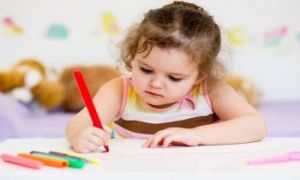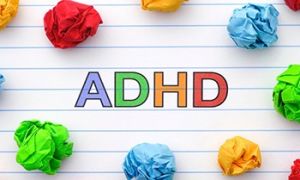Metacognition refers to the awareness and understanding of one's own thought processes. The following article provides information on Key Aspects, Benefits Of Metacognition, How To Introduce Metacognition To Preschoolers, Activities For Metacognition and more.
Key Aspects
-
Self-Regulation: This includes planning, monitoring, and evaluating your own learning and thinking activities.
-
Self-Awareness: This is about knowing what you know and what you don’t know. It involves reflecting on your cognitive abilities and recognizing your strengths and weaknesses.
Components of Metacognition
-
Metacognitive Knowledge: Understanding what strategies work best for you in different situations. This includes:
-
Declarative Knowledge: Knowing about things (e.g., understanding what metacognition is).
-
Procedural Knowledge: Knowing how to do things (e.g., knowing how to plan a study schedule).
-
Conditional Knowledge: Knowing when and why to use certain strategies (e.g., realizing when to take breaks during study sessions).
-
-
Metacognitive Regulation: Managing your own learning processes through activities like:
-
Planning: Setting goals and deciding how to approach a task.
-
Monitoring: Checking your understanding and progress as you go along.
-
Evaluating: Assessing how well you did after completing a task.
-
Benefits Of Metacognition
Metacognition, or thinking about one's own thinking, offers several benefits for learners of all ages, including preschoolers. Here are some key benefits:
1. Enhanced Self-Awareness
-
Understanding Strengths and Weaknesses: Helps children recognize their own learning strengths and areas for improvement.
-
Self-Confidence: Builds confidence as they become more aware of their abilities.
2. Improved Problem-Solving Skills
-
Strategic Thinking: Encourages the use of strategies to tackle problems, leading to better solutions.
-
Adaptability: Helps children adjust their approach when faced with new challenges.
3. Better Self-Regulation
-
Planning and Goal Setting: Promotes setting goals and planning how to achieve them.
-
Monitoring Progress: Encourages children to keep track of their progress and make adjustments as needed.
4. Increased Motivation
-
Ownership of Learning: When children understand their own learning processes, they take more ownership of their learning.
-
Intrinsic Motivation: Fosters intrinsic motivation as children set their own goals and work towards achieving them.
5. Enhanced Learning Outcomes
-
Deep Learning: Leads to deeper understanding and retention of information.
-
Transferable Skills: Develops skills that can be applied across different subjects and situations.
6. Encourages Lifelong Learning
-
Curiosity and Inquiry: Fosters a love for learning and a curiosity to explore new ideas.
-
Continuous Improvement: Encourages a mindset of continuous improvement and lifelong learning.
7. Better Emotional Regulation
-
Emotional Awareness: Helps children become more aware of their emotions and how they affect their learning.
-
Coping Strategies: Encourages the use of coping strategies to manage emotions effectively.
How To Introduce Metacognition To Preschoolers
Introducing metacognition to preschoolers can be both fun and engaging. Here are some practical ways to help young children develop metacognitive skills:
1. Model Thinking Out Loud
-
Example: Describe your thought process during an activity. "I need to find all the blue blocks. First, I'll look in this bin. Hmm, I don't see any blue blocks here. I'll try the next bin."
-
Purpose: Helps children understand how to think about their own thinking.
2. Ask Reflective Questions
-
Example: After an activity, ask questions like, "What did you do first? Why did you choose that?" or "How did you feel when you figured out the puzzle?"
-
Purpose: Encourages children to reflect on their actions and decisions.
3. Encourage Self-Talk
-
Example: Prompt children to talk through their thought process. "Can you tell me what you're thinking about as you draw?"
-
Purpose: Supports children in developing their inner voice and self-awareness.
4. Use Visual Aids
-
Example: Create a "Thinking Board" where children can draw or write their thoughts and plans. Use pictures and symbols for younger children.
-
Purpose: Helps children visualize their thought processes.
5. Practice Planning and Goal Setting
-
Example: Set simple, achievable goals for activities. "Let's plan how we will build this tower. What do we need to do first?"
-
Purpose: Teaches children to plan and set goals, reinforcing metacognitive regulation.
6. Reflect on Learning Experiences
-
Example: After a lesson or activity, discuss what was learned and how it was learned. "What did we learn about butterflies today? How did we learn it?"
-
Purpose: Encourages children to think about their learning process.
7. Encourage Problem-Solving
-
Example: Provide puzzles or challenges and ask children to explain their problem-solving strategies. "How did you figure out which piece goes here?"
-
Purpose: Develops critical thinking and self-reflection.
8. Use Storytelling and Role-Playing
-
Example: Tell stories that involve characters thinking and solving problems. Have children role-play different scenarios and discuss their thought processes.
-
Purpose: Helps children understand different perspectives and reflect on their own thinking.
9. Create a Positive Environment
-
Example: Praise children for their effort and thinking process, not just the outcome. "I like how you thought about different ways to build the tower."
-
Purpose: Reinforces the value of thinking and encourages a growth mindset.
10. Incorporate Metacognitive Language
-
Example: Use terms like "think," "plan," "remember," and "learn" in everyday conversations. "Let's think about what we need to pack for our trip."
-
Purpose: Familiarizes children with metacognitive concepts and language.
Activities For Metacognition
Here are some engaging activities that can help preschoolers develop metacognitive skills:
1. Thinking Aloud
-
Activity: Model thinking aloud by describing your thought process during a task, such as solving a puzzle or drawing a picture.
-
Purpose: Helps children understand how to think about their own thinking.
2. Reflective Journals
-
Activity: Provide simple journals for children to draw or write about their daily activities and thoughts.
-
Purpose: Encourages self-reflection and awareness of their learning processes.
3. Storytime Reflections
-
Activity: After reading a story, ask questions about the characters' thoughts and decisions. "Why do you think the bear chose to hibernate?"
-
Purpose: Helps children think about different perspectives and reasons behind actions.
4. Planning and Goal Setting
-
Activity: Set simple goals for activities, such as building a tower with blocks. Discuss the steps needed to achieve the goal.
-
Purpose: Teaches planning and setting achievable goals, enhancing self-regulation.
5. Problem-Solving Challenges
-
Activity: Provide puzzles or challenges and ask children to explain their problem-solving strategies. "How did you figure out which piece fits here?"
-
Purpose: Develops critical thinking and self-reflection.
6. Role-Playing Scenarios
-
Activity: Engage in role-playing activities where children act out different scenarios and discuss their thought processes. "How would you help a friend who is feeling sad?"
-
Purpose: Encourages empathy and perspective-taking.
7. Open-Ended Questions
-
Activity: Ask questions that have more than one possible answer. "What are some ways we can clean up our play area?"
-
Purpose: Promotes creative thinking and problem-solving.
8. Visual Thinking Boards
-
Activity: Create a "Thinking Board" where children can draw or write their thoughts and plans for activities.
-
Purpose: Helps children visualize and organize their thoughts.
9. Self-Talk Prompts
-
Activity: Encourage children to talk through their thought process during activities. "Tell me what you're thinking about as you build this tower."
-
Purpose: Supports the development of an inner voice and self-awareness.
10. Reflection Time
-
Activity: Set aside time at the end of the day for children to share what they learned and how they felt about different activities.
-
Purpose: Encourages reflection and awareness of their learning experiences.
How To Model Thinking Aloud
Modeling thinking aloud is a powerful way to demonstrate metacognitive strategies to preschoolers. Here’s how to do it effectively:
1. Choose a Task
-
Activity: Pick a task that the child can relate to, like solving a puzzle, drawing a picture, or building a block tower.
-
Purpose: Ensure the task is appropriate for the child's age and interests.
2. Verbally Describe Your Thought Process
-
Example: As you engage in the task, narrate your thoughts step-by-step.
-
Step-by-Step Guide:
-
Planning: "I'm going to build a tall tower. First, I need to find the big blocks."
-
Monitoring: "I see that this block doesn't fit here. I need a different one."
-
Evaluating: "I think my tower is too wobbly. What can I do to make it stronger?"
-
3. Use Clear and Simple Language
-
Keep It Simple: Use language that is easy for the child to understand.
-
Example: "I need to find the pieces with straight edges for the puzzle."
4. Encourage Participation
-
Ask Questions: Invite the child to think along with you. "What do you think we should do next?"
-
Listen and Respond: Acknowledge the child's suggestions and incorporate them into your thinking aloud. "Great idea! Let's try using the bigger block at the bottom."
5. Highlight Different Strategies
-
Problem-Solving: Demonstrate different strategies for solving problems. "If this piece doesn't fit, maybe we should try another one."
-
Decision-Making: Show how to make decisions. "I need to choose between the red and blue crayons. I think I'll use blue because it matches the sky."
6. Reflect on the Process
-
Summarize: At the end of the task, summarize what you did and how you thought through it. "We made a tall tower by using the big blocks first and checking to make sure it didn't wobble."
-
Discuss Learnings: Ask the child what they learned from the activity. "What did you think about our building process? What worked well?"
Examples of Thinking Aloud
-
During a Puzzle: "I need to find the corner pieces first. Here's one with a flat edge, so it must be a corner. Now I'll look for another piece that matches this color."
-
While Drawing: "I want to draw a tree. First, I'll draw the trunk. Hmm, the trunk is too thin. I'll make it wider. Now I'll add the branches and leaves."
Tips for Success
-
Be Patient: Give the child time to think and respond.
-
Be Encouraging: Praise their efforts and contributions.
-
Be Consistent: Regularly model thinking aloud during various activities to reinforce the concept.
By modeling thinking aloud, you provide children with a clear example of how to approach tasks, solve problems, and reflect on their thinking processes. This can greatly enhance their metacognitive skills and overall learning experience.
Storytime Reflection Questions
Before Reading
-
What do you think this story is about?
-
What do you see on the cover that makes you think that?
-
What kind of characters do you expect to meet in this story?
During Reading
-
How do you think the character is feeling right now?
-
What do you think will happen next?
-
Why do you think the character made that choice?
-
Can you relate to what the character is going through? Have you ever felt the same way?
After Reading
-
What was your favorite part of the story? Why?
-
What did you learn from the story?
-
How did the story make you feel?
-
If you were the main character, would you have done anything differently? Why or why not?
-
What do you think the author wanted us to learn from this story?
-
Can you tell me about a time when you felt like one of the characters in the story?
Connecting to Real Life
-
Does this story remind you of anything in your own life?
-
How are you similar to or different from the characters in the story?
-
What would you do if you were in the same situation as the character?
Exploring Alternatives
-
What other endings can you think of for this story?
-
What could the character have done differently to solve their problem?
-
Can you create a new adventure for the character?
These questions can help children to think deeply about the story, understand the characters' perspectives, and connect the story to their own experiences. This not only enhances their comprehension skills but also fosters metacognitive awareness.
Self Talk Prompts For Preschoolers
Self-talk prompts can help preschoolers articulate their thoughts, make sense of their experiences, and develop metacognitive skills. Here are some self-talk prompts tailored for young children:
During Playtime
-
What are you building/making?
-
Why did you choose that color/block/toy?
-
What should we do next?
During Storytime
-
What do you think will happen next in the story?
-
How do you think the character feels?
-
What would you do if you were the character?
During Art Activities
-
What are you drawing/painting?
-
Why did you decide to use these colors?
-
What part of your drawing do you like the most?
During Problem-Solving Tasks
-
What is the problem we need to solve?
-
What do you think we should try first?
-
How can we fix this if it doesn't work?
During Routine Activities
-
What do we need to do to get ready for snack time?
-
What should we do first, next, and last?
-
Why is it important to wash our hands before eating?
During Reflection Time
-
What did you enjoy the most today?
-
What was something that was a little hard for you?
-
What did you learn from doing that activity?
During Emotional Moments
-
How are you feeling right now?
-
Why do you think you're feeling this way?
-
What can we do to feel better?
During Transitions
-
What do we need to pack up before we leave?
-
What do we need to remember for our trip/outing?
-
How should we line up for our walk?
These prompts can help children become more aware of their thinking processes, make decisions, and reflect on their experiences.
Understanding and developing metacognitive skills can greatly enhance a child's ability to learn and adapt in various situations. It's a powerful tool for lifelong learning.
Further Reading
Problem-Solving Strategies For Children
Strategies For Using Visual Communication For Children
Importance Of Reading To Children
Guide To Transitions Between Activities In Early Childhood Services
Creating Smooth Transitions In Early Childhood Settings
Using Open Ended Questions with Children
Importance Of Using Open Ended Questions
Open Ended Play Materials


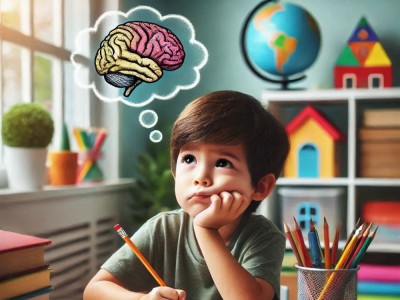


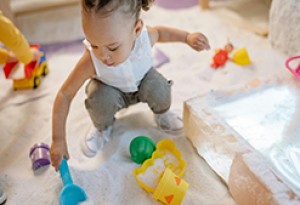

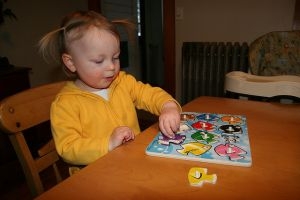 Toddlers have a greater understanding of the world around them by this stage. Their cognitive development (also known as intellectual development and thinking skills) continues
Toddlers have a greater understanding of the world around them by this stage. Their cognitive development (also known as intellectual development and thinking skills) continues Infants begin to develop trust when parents begin to fulfil their needs. Such as changing an infant's nappy when needed, feeding on request and holding
Infants begin to develop trust when parents begin to fulfil their needs. Such as changing an infant's nappy when needed, feeding on request and holding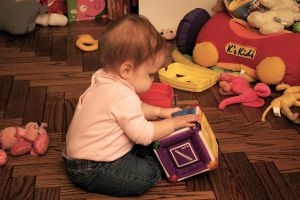 Beginning at birth the construction of thought processes, such as memory, problem solving, exploration of objects etc, is an important part of an infant’s cognitive
Beginning at birth the construction of thought processes, such as memory, problem solving, exploration of objects etc, is an important part of an infant’s cognitive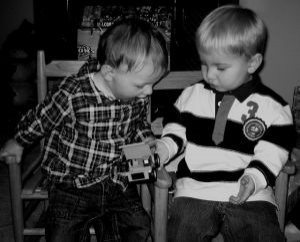 Toddlers want to do more on their own and do not like it when you begin to establish limits on their behaviour. Tantrums can become
Toddlers want to do more on their own and do not like it when you begin to establish limits on their behaviour. Tantrums can become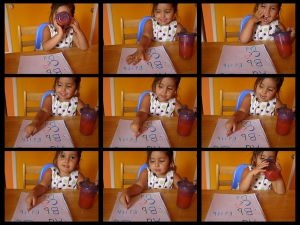 Your preschooler is now able to focus their attention more accurately and is less influenced by distractions. The intensity of questions increase as your child
Your preschooler is now able to focus their attention more accurately and is less influenced by distractions. The intensity of questions increase as your child John Dewey is often seen as the proponent of learning by doing – rather than learning by passively receiving. He believed that each child was active,
John Dewey is often seen as the proponent of learning by doing – rather than learning by passively receiving. He believed that each child was active,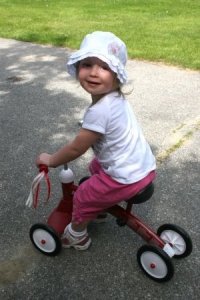 Toddler advance and gains new skills in Gross Motor Development milestones achieved throughout earlier years. Co-ordination and challenges that could not be performed before such
Toddler advance and gains new skills in Gross Motor Development milestones achieved throughout earlier years. Co-ordination and challenges that could not be performed before such Erik Erikson developed a psychosocial theory to understand how we each develop our identities through eight stages of psychosocial development from infancy to adulthood. The
Erik Erikson developed a psychosocial theory to understand how we each develop our identities through eight stages of psychosocial development from infancy to adulthood. The At this point preschoolers begin to interact effectively with others. Play becomes more innovative and organized and “boyfriend” or “girlfriend” begins to emerge. Preschoolers have
At this point preschoolers begin to interact effectively with others. Play becomes more innovative and organized and “boyfriend” or “girlfriend” begins to emerge. Preschoolers have From now, babies begin to identify and respond to their own feelings, understanding other's feelings & needs and interact positively with others. A baby's social and
From now, babies begin to identify and respond to their own feelings, understanding other's feelings & needs and interact positively with others. A baby's social and
